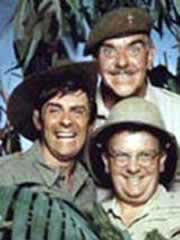
Journey’s tour of duty from progressive rock to pop rock didn’t reach its peak until the mid eighties when after the heights found by the release of ‘Raised On Radio,’ (May 1986), the band suddenly and very surprisingly split deciding individually to follow solo pursuits. The beginning of their ‘journey’ started with the release of two albums. The self titled, ‘Journey’ in April 1975 and the quickly followed ‘Look Into The Future,’ in January 1976. The birth of the rock band from San Francisco, California was introduced to the public with strong ‘art rock’ themes. A swathe of guitars and mixed strangled keyboards were the fore front of frightening fast drum rhythms that were the basis of their primitive progressive roots. Using experimental guitar riffs and collaborating different textures of sound, it was doubtful, at first as to were the band was heading musically. Their ‘Look Into The Future’ album was a definitive soup of grungy, depressingly loud hard rock and light ,airy soft rock pop.
Formed in 1973, a few line up changes had taken place under the guidance of manager Walter Herbert. Once a road manager for Santana, he had not been a strange, unknown face to the band as vocalist, Gregg Rolie and guitarist Neal Schon were both ex Santana members, in fact it was Rolie who had co founded Santana with Carlos Santana only a couple of years previously. By the time ‘Look Into The Future’ had been released, guitarist, George Tickner had left the band. (The rather famous vocalist Steve Perry didn’t join until 1978, the man who gave the band their supreme, unique sound.) Liverpool born Aynsley Dunbar replaced Prairie Prince on drums who subsequently went on to a successful career with The Tubes. Ross Valory, however, remained sturdy on bass who, incidentally once was a firm member of The Steve Miller Band.
Originally named ‘The Golden Gate Bridge,’ an unusual rock band title, they were advised shortly after forming to change their name by Herbert who decided on a public vote through a local radio station. A name for a rock band should be just one word, but never more than two. With one name, they could be easily remembered and recognised, and besides, ‘The Golden Gate Bridge’ sounded ridiculous, thus, Journey was born. Not, however, the only time that the music industry has called for the help of the viewing or listening public. More recently, Wet Wet Wet asked the public’s help when choosing the name for their album which was decided upon someone calling in with ‘Popped In Souled Out.’ I now promise not to mention Wet Wet Wet again in this review…(!)
So here’s the ‘Look Into The Future’ album, and we start off with the cover. Brightly orange with a large paperweight in the middle, the scene is looking through one doorway after another (the same effect when looking into a mirror in front of another.) Our four members are in a hazy blue as though Scotty is about to beam them onto an unknown planet to save the world from the dreaded cling ons. With all the visual trappings for a progressive rock group stuck in the mid seventies, our members are splendidly clad in enormous perms and somewhat shiny jumpsuits. Hoorah for prog rock fashions…!
Released by CBS, we will only encounter eight tracks on the entire album. This is pretty much a standard role call for a progressive rock album. Not very well known in the U.K, this particular album doesn’t seem to be noted as being a position holder in the U.K chart at the time of release. In fact, British releases didn’t appear until 1982. Albums up until now had only been recognised by the U.S charts. Only four albums released between March 1982 and May 1986 managed to swim across to our shores and only a pathetic two singles appeared over here throughout their career. The first one, ‘Don’t Stop Believen’.’ only scraped in at number 42 and stayed in the charts for a very short month. It will probably be not surprising that a lot of you will wonder who on Earth Journey are…
Despite the efforts of Journey to please the crowd around them in the seventies, it wasn’t until their album, ‘Infinity’ released in 1978 that they finally found superior rock band status. When this album went platinum, they thought that they could go no further and the future was bright. Actually it wasn’t, when celebrating their good fortune on this album, Aynsley Dunbar was escorted, shall we say, out of the studio due to indifferences with other members of the band. I felt that there was always an underlying resentment for Dunbar as his career to date when joining the band read more like a Who’s Who in the rock world. Journey’s and Herbert’s financial asset, Nightmare Productions took Dunbar to court over overpaid wages to the tune of sixty thousand dollars, but Dunbar shot back and managed to successfully sue Nightmare Productions for 3.25 million dollars for a long list of angst’s including unfair dismissal from the band. Nightmare productions, in every sense it would seem…
Although Journey are now far from our minds, their influence is still felt in rock bands today. Very much of their time, their biggest followers were bands around in the mid seventies to mid eighties the same as them. It is quite a debate as to what might have happened if Journey had stayed together. Perhaps not quite the same status as Pink Floyd, but they wouldn’t have been far away from it. For those who dote on their aging progressive rock, you would certainly not need to be told about this album. For those who fancy finding out where Spinal Tap came from, then move the dusty records up an inch and make room for a rock band who needs to be remembered…
©M.Duffy originally published in 2006 at - http://paperback-sam.livejournal.com/
Sunday, February 03, 2008
Stack Another Orchestral Layer On Top, Why Not!
Posted by
Michelle Duffy
at
Sunday, February 03, 2008
![]()
Subscribe to:
Post Comments (Atom)




No comments:
Post a Comment